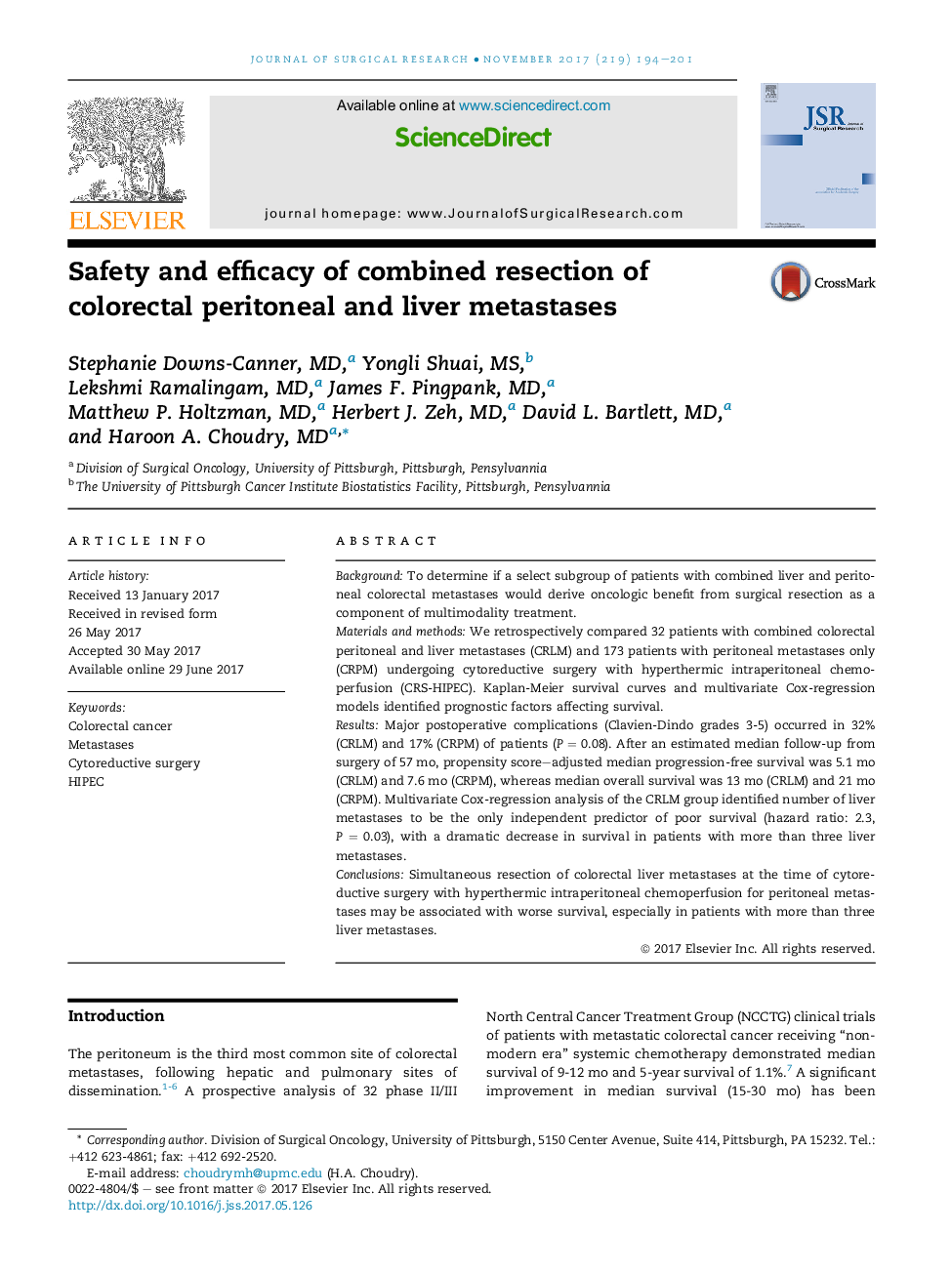| Article ID | Journal | Published Year | Pages | File Type |
|---|---|---|---|---|
| 5733999 | Journal of Surgical Research | 2017 | 8 Pages |
BackgroundTo determine if a select subgroup of patients with combined liver and peritoneal colorectal metastases would derive oncologic benefit from surgical resection as a component of multimodality treatment.Materials and methodsWe retrospectively compared 32 patients with combined colorectal peritoneal and liver metastases (CRLM) and 173 patients with peritoneal metastases only (CRPM) undergoing cytoreductive surgery with hyperthermic intraperitoneal chemoperfusion (CRS-HIPEC). Kaplan-Meier survival curves and multivariate Cox-regression models identified prognostic factors affecting survival.ResultsMajor postoperative complications (Clavien-Dindo grades 3-5) occurred in 32% (CRLM) and 17% (CRPM) of patients (PÂ =Â 0.08). After an estimated median follow-up from surgery of 57Â mo, propensity score-adjusted median progression-free survival was 5.1Â mo (CRLM) and 7.6Â mo (CRPM), whereas median overall survival was 13Â mo (CRLM) and 21Â mo (CRPM). Multivariate Cox-regression analysis of the CRLM group identified number of liver metastases to be the only independent predictor of poor survival (hazard ratio: 2.3, PÂ =Â 0.03), with a dramatic decrease in survival in patients with more than three liver metastases.ConclusionsSimultaneous resection of colorectal liver metastases at the time of cytoreductive surgery with hyperthermic intraperitoneal chemoperfusion for peritoneal metastases may be associated with worse survival, especially in patients with more than three liver metastases.
